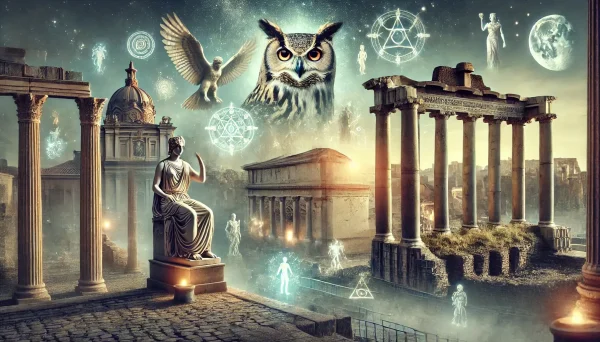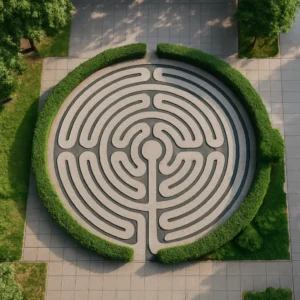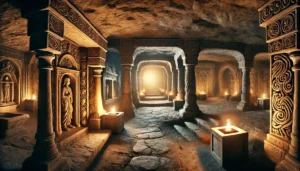In the ancient world, mythology and urban life were deeply intertwined. Myths weren’t just stories told around fires—they shaped how cities were built, governed, and understood. Gods and heroes were present in temples, markets, palaces, and city gates. Cities were often believed to be founded by divine beings or protected by mythological figures. These myths gave purpose, identity, and power to the people who lived within their walls. Today, ruins and legends still whisper the sacred bond between mythology and ancient cities.
Myths as Foundations of Cities
Many ancient cities claimed mythical origins to legitimize their existence. Athens, for example, was named after the goddess Athena, who won the city’s patronage in a contest against Poseidon. Rome traced its roots to Romulus and Remus, twin brothers raised by a she-wolf and descendants of the Trojan hero Aeneas. These stories connected cities to divine ancestry, offering pride and spiritual protection to their citizens.
Temples as Centers of Urban Life
In ancient cities, temples were more than religious spaces—they were urban focal points. The Parthenon in Athens, the Temple of Karnak in Thebes, or the ziggurats of Mesopotamia were dedicated to gods who “lived” in the city. Civic life revolved around these sacred spaces. Rituals, festivals, and political decisions often occurred in or around temples, reinforcing the idea that mythology guided the destiny of the city.
Myth in Architecture and Art
Mythological themes were carved into columns, painted on walls, and embedded in city layout. In ancient Egypt, entire cities were aligned with celestial bodies to honor deities like Ra or Osiris. In Mesoamerican cities like Teotihuacan, pyramids represented the cosmic mountains of creation. Murals, statues, and reliefs told stories of gods and monsters, ensuring myths were visible in the daily life of citizens.
Mythology as Political Power
Rulers often used mythology to validate their authority. In ancient Sumer, kings claimed to be chosen by gods like Enlil or Inanna. In Egypt, pharaohs were seen as divine beings themselves, living manifestations of Horus. In the Inca Empire, emperors traced their lineage to the sun god Inti. By tying leadership to myth, rulers justified power and inspired loyalty among the people.
Sacred Geography of Cities
Mythology shaped how cities were designed. In many cultures, specific directions, rivers, or mountains were considered sacred. Ancient Chinese cities followed geomantic principles based on cosmic harmony. In the city of Delphi, believed to be the center of the world by ancient Greeks, a sacred omphalos stone marked the mythical navel of the Earth. These myth-inspired layouts reflected a desire to mirror the divine order in urban planning.
Legends That Evolved with Time
As cities grew or fell, their myths evolved. Troy, once thought to be purely mythical, was later discovered in modern-day Turkey—its ruins reshaping how myth and archaeology are connected. Babylon’s Hanging Gardens remain legendary, even as their exact location is debated. Cities like Jerusalem, Mecca, and Varanasi continue to be sacred, with millennia-old myths still influencing modern life and pilgrimage.
Myth and Identity Today
Even today, cities embrace their mythological pasts as part of cultural identity. Athens honors Athena in festivals and tourism. Rome celebrates its founding myth in art and national symbolism. Mexico City remembers Aztec legends like the founding of Tenochtitlán on a lake with an eagle and cactus—now depicted on the country’s flag. These myths endure not just in history books, but in the streets, symbols, and stories of living cities.
Conclusion: Where Myths Were Made Real
In ancient cities, mythology was not separate from daily life—it was the very foundation of civic existence. It shaped architecture, authority, and urban space, offering people meaning beyond stone and streets. Today, these stories continue to resonate, reminding us that even the most enduring cities were once born from legends. In the ruins of temples and the tales of heroes, we find a timeless connection between myth and place—a testament to how imagination helped build the ancient world.







